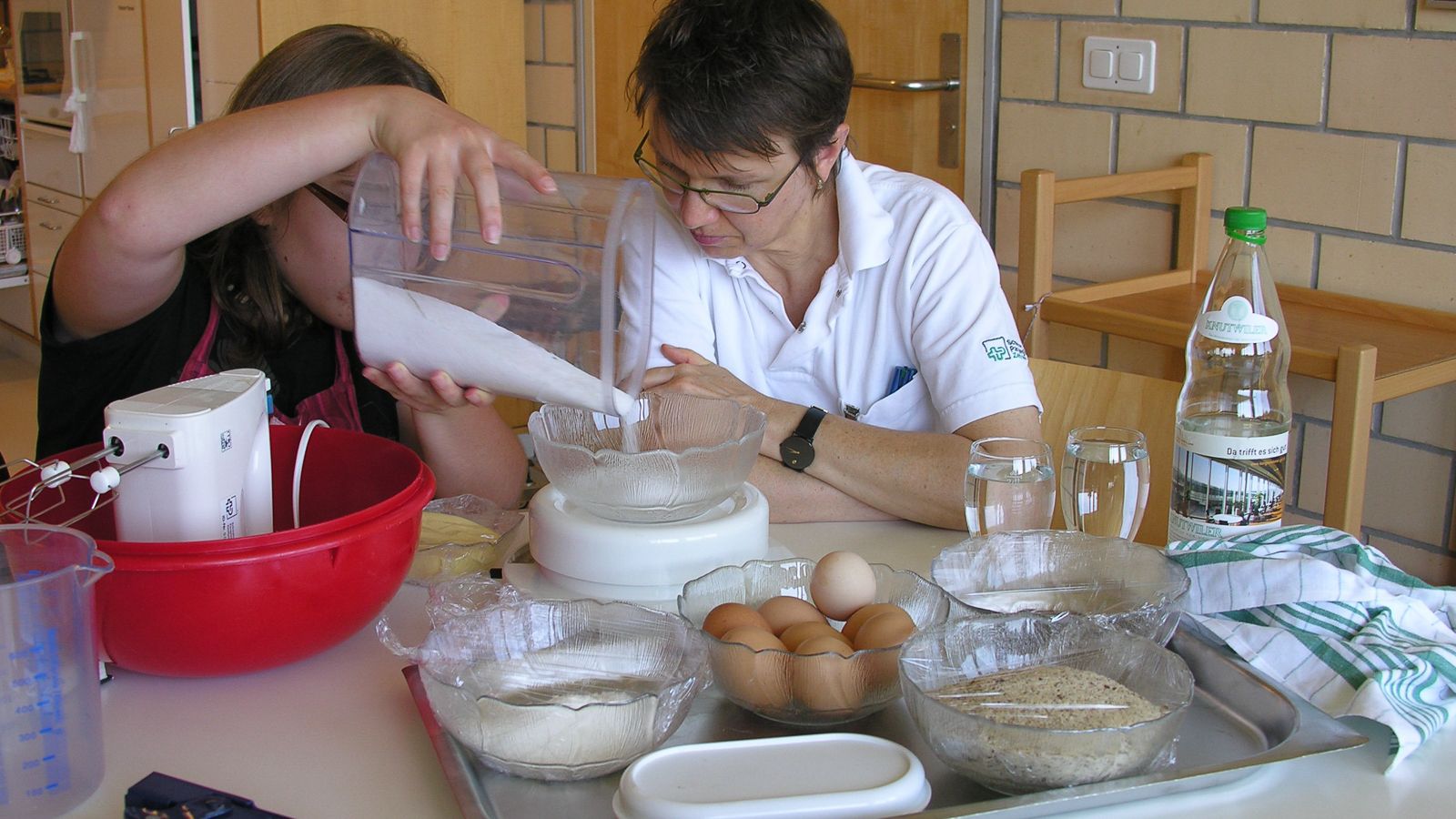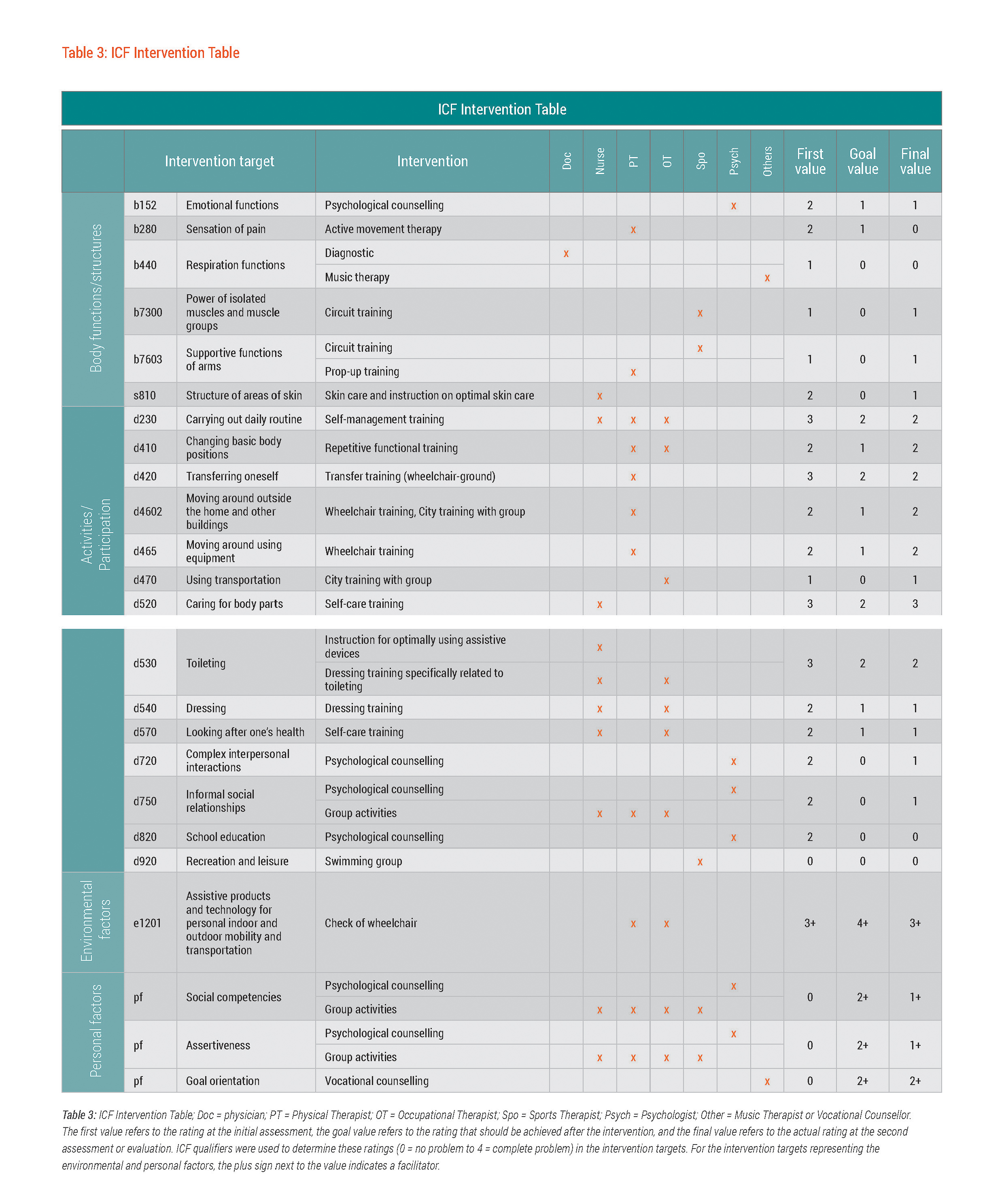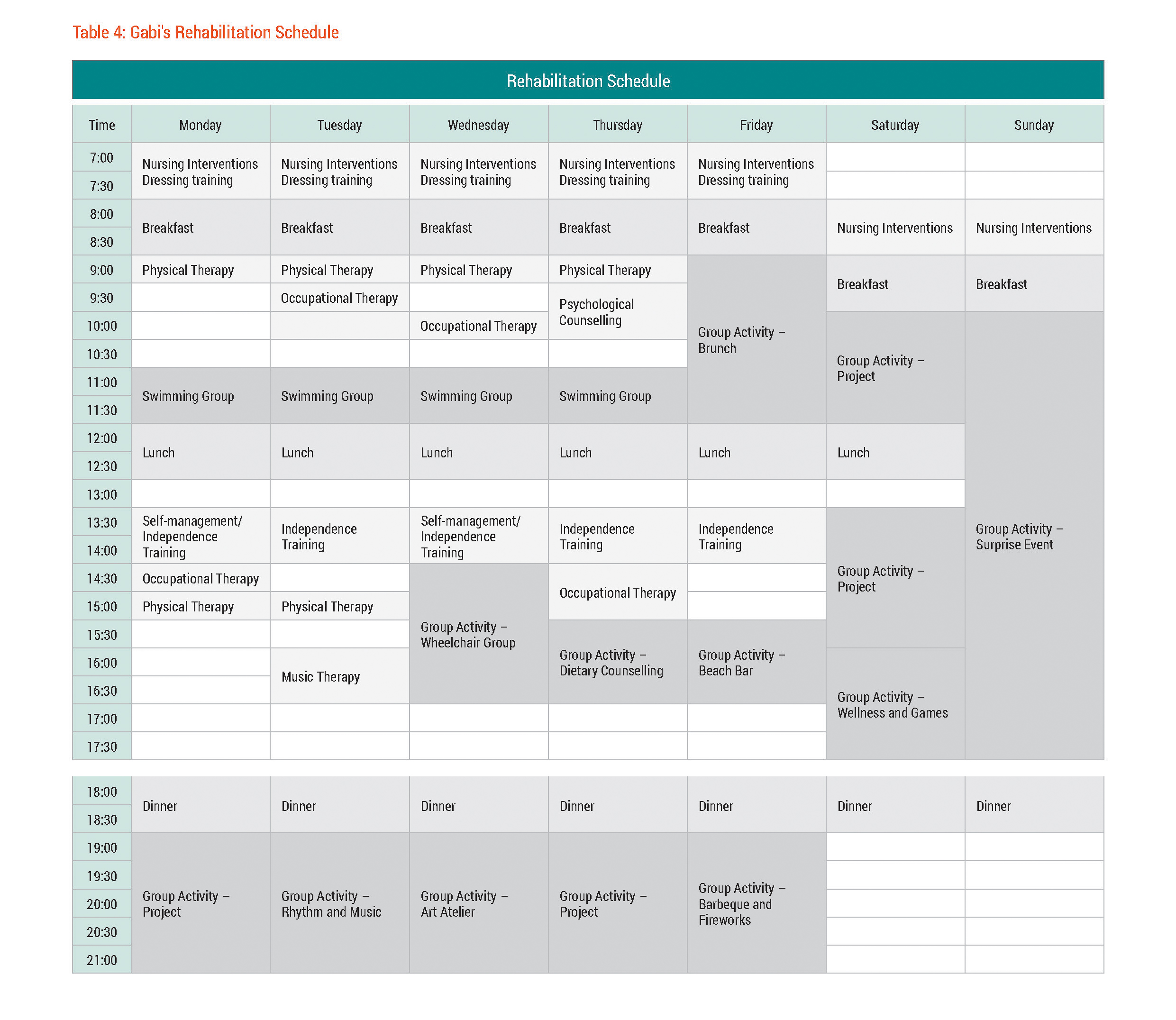Assignment and Intervention

Gabi’s multidisciplinary rehabilitation team for the three-week Rehab-Cycle® included a physician, a nurse, physical, occupational and sports therapists, a psychologist, and a music therapist. Additionally, a vocational trainer was available to address her vocational needs. Each intervention target that was documented on the ICF Categorical Profile during the assessment phase was assigned to one or more of these health professionals. The ICF Intervention Table provided an at-a-glance overview of the assignment of the intervention target to the respective team member(s) as well as the ICF qualifier values determined during the assessment phase (first value, goal value) and the actual qualifier rating given at the re-assessment of Gabi's functioning after interventions. See table 3.

Table 3: ICF Intervention Table; Doc = physician; PT = Physical Therapist; OT = Occupational Therapist; Spo = Sports Therapist; Psych = Psychologist; Other = Music Therapist or Vocational Counsellor. The first value refers to the rating at the initial assessment, the goal value refers to the rating that should be achieved after the intervention, and the final value refers to the actual rating at the second assessment or evaluation. ICF qualifiers were used to determine these ratings (0 = no problem to 4 = complete problem) in the intervention targets. For the intervention targets representing the environmental and personal factors, the plus sign next to the value indicates a facilitator.
Gabi's rehabilitation programme was comprehensive, and each day included a full schedule of both individually-focused activities and interventions, as well as numerous group activities. See table 4.

Table 4: Gabi’s Rehabilitation Schedule
Individual Sessions
Gabi's rehabilitation schedule included interventions that were performed solely by one health professional. For example, the physical therapist conducted active movement therapy to alleviate pain, music therapy was provided to improve Gabi's respiration functions, and the nurse provided skin care as well as instructed Gabi on how to optimally care for skin herself. The nurse also instructed Gabi on how to use an assistive device to independently manage her catheterisation.
There were also intervention targets that were addressed with various interventions. This was intended to address the same intervention target from different angles. The nurse, for example, shared the responsibility with the occupational therapist for many self-care interventions, such as to address problems with toileting, dressing, and looking after one's health. In addition, the nurse, physical and occupational therapists all provided Gabi, in separate sessions, self-management training to improve her ability to carry out her daily routine. City training (in a group) to improve Gabi's ability to move around outside and to use transportation was also led by both the physical and the occupational therapist in individual sessions.
In addition to interventions to increase Gabi's independence in mobility and self-care, measures to meet Gabi's psychological needs also played a central role during the intervention phase of rehabilitation. The psychologist met with Gabi once a week to work on her emotional (in)stability, to build or strengthen Gabi's interpersonal interaction skills, as well as the skills she needed to enhance informal social relationships, especially with non-wheelchair using peers. During the counselling sessions, the psychologist also discussed issues related to Gabi's academic problems, including those associated with interpersonal interactions and informal social relationships.
""The adolescent-tailored rehabilitation programme went beyond one-to-one interventions. Besides the individual sessions, Gabi also participated in group activities.""
Group Activities
The adolescent-tailored rehabilitation programme went beyond one-to-one interventions. Besides the individual sessions, Gabi also participated in group activities. According to table 4, almost half of Gabi's rehabilitation schedule comprised of group activities.
These group activities provided Gabi an opportunity to strengthen her interpersonal interactions and improve peer relationships, even if mostly with other wheelchair users. Group excursions to a nearby city was also intended to further strengthen Gabi's confidence in using public transportation. In group activities as well as in individual sessions, Gabi’s need to be more assertive and to improve her social competencies were addressed.
The group activities were organised not only to address problems, but also to foster strengths and interests. For example, Gabi participated in a swimming group simply to encourage and build upon one of her favourite leisure activities. Many group activities were just for fun e.g. an outdoor picnic with a barbeque, a wellness evening with a massage, etc. There was even a workshop offered, in which parents were able to participate.
""The group activities were organised not only to address problems, but also to foster strengths and interests.""
Gabi and her rehabilitation team were hopeful that the individual sessions as well as the group activities all contributed to reaching the goals they set in the assessment phase of the Rehab-Cycle®. In the next phase of the Rehab-Cycle®, the evaluation phase, the rehabilitation team re-evaluated Gabi's functioning and the status of the contextual factors to determine whether the goals that they set were reached.